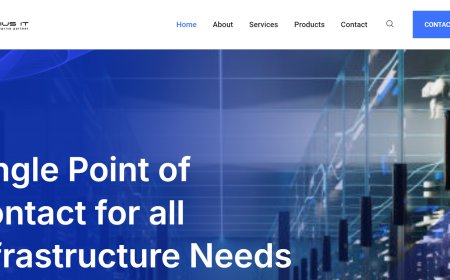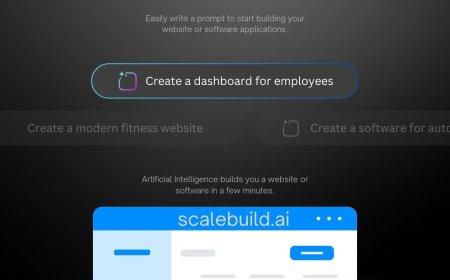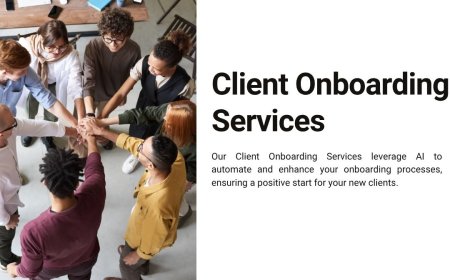How to Develop Software That Solves Real Problems
How to Develop Software That Solves Real Problems

In todays digital world, building software is easier than ever. But building software that truly solves a real-world problem? Thats where the real challenge lies.
Far too often, businesses invest in flashy apps or overloaded platforms that end up doing everythingexcept solving the user's core pain point. So, how do you avoid this trap and develop a solution that actually makes a difference?
Lets break down the process of building software that doesn't just functionbut functions with purpose.
1. Understand the Problem Deeply
Every impactful software product starts with a problem worth solving. But to truly grasp that problem, you need to look beyond your assumptions.
Talk to your target users. Conduct interviews. Explore how theyre currently handling the issuewhether it's through spreadsheets, outdated systems, or sheer frustration.
-
Ask the right questions: Whats costing them time? Where are they making errors? What keeps them up at night?
-
Observe the context: You may find the real problem isn't what users sayits what they struggle with silently.
Real problems are found in the gaps, in the inefficiencies, and in the moments where people say, There has to be a better way.
2. Validate the Idea Before You Start Building
Youve spotted a problem. Great. But is it really worth solving?
Before writing a single line of code, its essential to validate your solution. This means checking whether:
-
People are willing to pay for it
-
Existing alternatives dont solve the problem well
-
The market demand is strong enough to support your idea
You can test this with:
-
MVPs (Minimum Viable Products)
-
Prototypes or clickable mockups
-
Landing pages to gauge interest
-
Early access programs with a select group of users
Validation isnt about getting it right from day one. Its about avoiding months of development on something no one actually wants.
3. Set Clear Objectives and Success Metrics
Now that youre confident in your idea, define what success looks like.
A real solution must have clear, measurable goals. For example:
-
Reduce manual data entry time by 40%
-
Increase booking efficiency for staff by 60%
-
Save 10 hours a week for each team member
Tie these metrics to user impact and business outcomes. Doing this keeps your team focused and aligned during developmentand gives you something tangible to measure after launch.
4. Work With the Right Development Team
The quality of your software depends heavily on who builds it.
You need a development team that doesn't just follow instructionsbut understands the problem you're solving.
Whether its an in-house team or an offshore partner, look for:
-
Domain expertise in your industry
-
A collaborative mindset
-
Ability to translate problems into intuitive tech solutions
Clear communication is key. Developers should know why a feature mattersnot just what its supposed to do.
5. Build With the End-User in Mind
Solving a problem is more than writing smart code. Its about creating an experience thats effortless for the user.
A great solution is one people enjoy usingeven if it tackles something complex. Thats why UI/UX design is a critical part of this journey.
-
Keep workflows intuitive and clean
-
Avoid clutter and information overload
-
Involve real users during early design and development
If your user has to figure out how to use it, its not solving the problemits adding a new one.
6. Choose the Right Technologies
Technology is a toolnot the solution itself. Select a tech stack that aligns with the problem, scale, and environment of your product.
For example:
-
Use AI for intelligent automation or prediction
-
Use IoT if your product needs to track or control physical devices
-
Choose cloud-native tools if you expect the app to scale rapidly
Also, consider security, performance, and integration with existing tools your users rely on.
You dont have to chase the latest trend. Just choose what serves your purpose best.
7. Test, Iterate, Improve
No software is perfect from day one. Thats why continuous feedback and testing matter so much.
-
Run usability tests with real users
-
Get feedback during each sprint
-
Prioritize bugs and improvement requests
Even after launch, use analytics, customer support data, and surveys to keep evolving. The most successful software products today are the ones that keep solving problems better over time.
8. Plan for Post-Launch Growth
The launch is just the beginning.
To keep your software useful and relevant, you need to:
-
Monitor real-world usage
-
Track your success metrics
-
Release updates, bug fixes, and new features based on user needs
Customer support, onboarding, and user education are all part of the solution too. A great product needs a great support system behind it.
Conclusion: Build to Solve, Not Just to Ship
The digital space is crowded with tools that do everythingbut solve nothing. Dont build another one of those.
Instead, focus on:
-
Deeply understanding your users
-
Solving one clear problem exceptionally well
-
Iterating with feedback and purpose
If you're looking for a development partner to turn your idea into a problem-solving product, explore companies offering custom software development Canada businesses trust for scalable, tailored, and intelligent solutions.
Because at the end of the day, great software doesnt just workit works for someone.








































